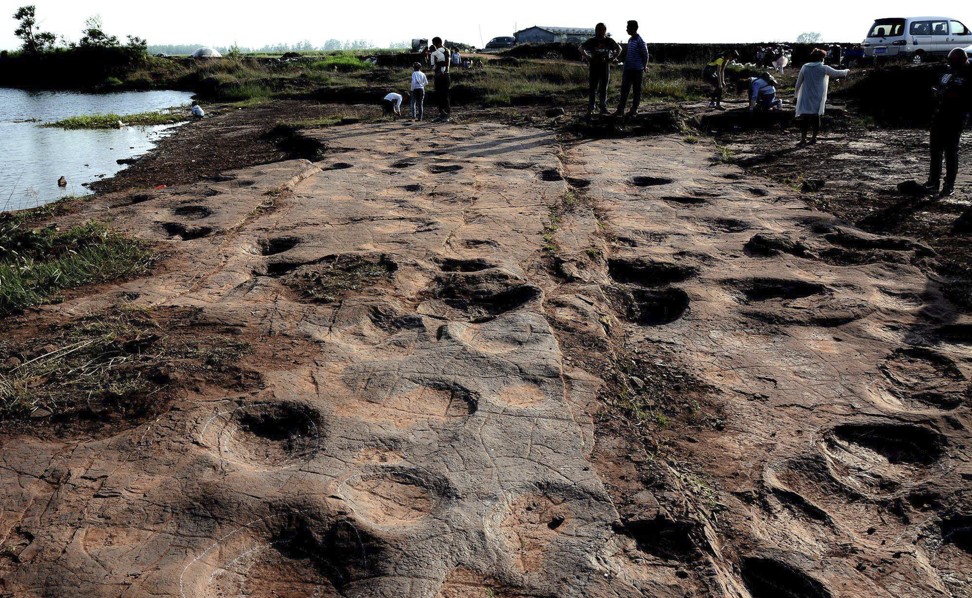
Did the stars of Jurassic World: Fallen Kingdom once roam in packs around China?
Footprints found in Shandong province suggest beasts were social and travelled together, scientists say
The discovery of dozens of dinosaur footprints in eastern China could be evidence that the carnivorous beasts that inspired the raptors in the Jurassic Park and Jurassic World film franchises once roamed the country in large groups, researchers have said.
Scientists have been studying about 70 prints believed to have been made by Deinonychus antirrhopus, and hundreds more by other species, in a mountainous region of Tancheng county in Shandong province for more than a year, according to various newspaper reports.
Deinonychus was a small- to medium-size dinosaur that grew to a length of about 3.4 metres (11 feet). Its prints were among 300 first found in 2015 by Tang Yonggang, a well-known “dinosaur hunter” and visiting professor at Linyi University in Shandong.
But it was not until last year that scientists were able to conduct a thorough investigation of the site.
“Three hundred footprints is not a shockingly large number, but the diversity in the species found at one site is extremely rare,” Xing Lida, a dinosaur expert from China University of Geosciences, was quoted as saying in a report by Beijing Times on Monday.
Scientists concluded that the prints had been made by animals from seven different dinosaur species that lived about 150 million years ago.
Deinonychus first appeared during the mid-Jurassic Period (167 million years ago) and survived until the end of the Cretaceous period (65 million years ago), according to a separate report by Global Times.
Xing, who led the latest research, said most of the Deinonychus footprints, which measured about 8cm (3 inches) in length, were found along four distinct pathways, suggesting the animals travelled in groups.



